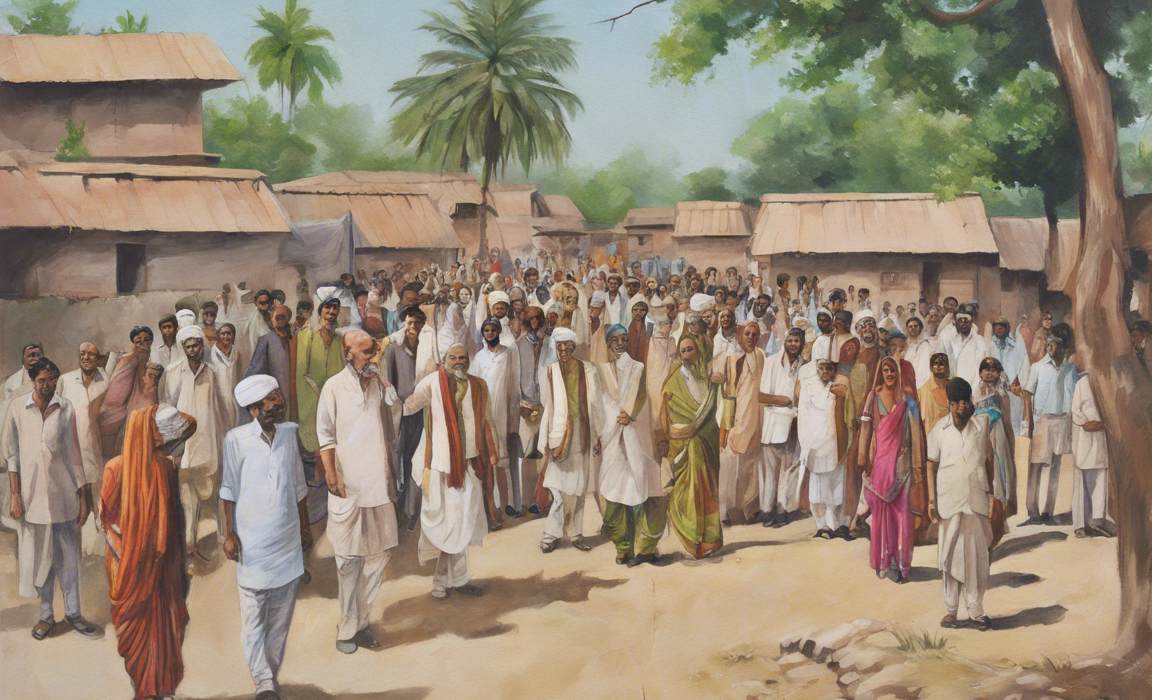In the quest for sustainable development, rural communities play a pivotal role as they constitute a significant portion of the world’s population. India, in particular, has a decentralized system of governance known as Panchayati Raj, which emphasizes local self-governance through elected representatives at the village, intermediate, and district levels. To further enhance this system, the Government of India has introduced Panchayat Darpan, a digital initiative aimed at empowering local governing bodies and fostering rural development. This article delves into the benefits of Panchayat Darpan for rural development, highlighting its impact on transparency, decision-making, and overall progress at the grassroots level.
Enhancing Transparency and Accountability
One of the primary advantages of Panchayat Darpan is its ability to foster transparency within the governance structure of Panchayati Raj institutions. By digitizing various processes such as budget allocation, fund utilization, and project implementation, Panchayat Darpan enables real-time monitoring and tracking of activities. This transparency not only enhances accountability among elected representatives but also builds trust among rural communities, ensuring that resources are utilized efficiently for the benefit of the people.
Improving Decision-Making and Planning
Panchayat Darpan serves as a comprehensive platform that enables data-driven decision-making at the grassroots level. By providing access to vital information such as demographic data, socio-economic indicators, and development schemes, this digital tool equips Panchayati Raj institutions with the necessary insights to plan and implement targeted interventions. Through dashboards and analytics, local representatives can identify priority areas, assess the impact of ongoing projects, and strategize for future development initiatives effectively.
Empowering Local Governance
Another significant benefit of Panchayat Darpan is its capacity to empower local governing bodies by providing them with the tools and resources needed to fulfill their mandate. By streamlining administrative processes, facilitating communication, and promoting collaboration among different levels of Panchayati Raj institutions, this digital platform enhances the efficiency and effectiveness of rural governance. Moreover, Panchayat Darpan encourages citizen participation and feedback, fostering a culture of inclusive decision-making and community engagement.
Promoting Sustainable Development
Panchayat Darpan plays a crucial role in promoting sustainable development in rural areas by facilitating the integration of environmental considerations into local planning and decision-making. Through features such as mapping tools, environmental impact assessments, and performance indicators, this digital initiative enables Panchayati Raj institutions to prioritize eco-friendly practices, climate resilience, and natural resource management. By promoting sustainable development goals, Panchayat Darpan contributes to the long-term well-being of rural communities and the environment.
Enhancing Capacity Building and Skills Development
Additionally, Panchayat Darpan serves as a platform for capacity building and skills development among elected representatives and Panchayat functionaries. By providing training modules, best practices, and knowledge sharing opportunities, this digital tool equips local leaders with the necessary skills and competencies to effectively govern their constituencies. Furthermore, Panchayat Darpan fosters networking and collaboration among different Panchayati Raj institutions, enabling peer learning and the exchange of innovative solutions for common challenges.
Leveraging Technology for Inclusive Growth
In an era where digital transformation is revolutionizing various sectors, leveraging technology for inclusive growth becomes imperative, especially in rural areas. Panchayat Darpan harnesses the power of digital tools and connectivity to bridge the urban-rural divide, promote economic opportunities, and improve service delivery in remote areas. By fostering e-governance practices, promoting digital literacy, and ensuring access to information and services, this digital platform empowers rural communities to participate in the digital economy and enhance their quality of life.
Frequently Asked Questions (FAQs)
1. What is the purpose of Panchayat Darpan?
The primary purpose of Panchayat Darpan is to enhance transparency, accountability, and efficiency within Panchayati Raj institutions, thereby empowering local governing bodies to drive rural development effectively.
2. How does Panchayat Darpan promote data-driven decision-making?
Panchayat Darpan provides access to essential data, reports, and analytics that enable local representatives to make informed decisions, prioritize initiatives, and monitor the progress of development projects in real time.
3. Is Panchayat Darpan accessible to all stakeholders, including rural communities?
Yes, Panchayat Darpan is designed to be user-friendly and accessible to a wide range of stakeholders, including elected representatives, Panchayat functionaries, government officials, and rural communities.
4. How does Panchayat Darpan contribute to sustainable development goals?
Panchayat Darpan promotes sustainable development by integrating environmental considerations, climate resilience, and natural resource management into local planning and decision-making processes.
5. Can Panchayat Darpan be customized to suit the specific needs of different Panchayati Raj institutions?
Yes, Panchayat Darpan is designed to be flexible and customizable, allowing different Panchayati Raj institutions to tailor the platform according to their unique requirements, priorities, and contexts.
6. What are some of the key features of Panchayat Darpan that distinguish it from traditional governance practices?
Some key features of Panchayat Darpan include real-time monitoring, digital dashboards, online collaboration tools, mapping functionalities, and communication channels that enhance the efficiency and effectiveness of local governance.
7. How can Panchayat Darpan contribute to the digital empowerment of rural communities?
By promoting digital literacy, e-governance practices, and access to online services, Panchayat Darpan empowers rural communities to participate in the digital economy, access information, and improve their overall well-being.
8. What are the potential challenges associated with the implementation of Panchayat Darpan in rural areas?
Challenges such as limited internet connectivity, infrastructural constraints, digital literacy gaps, and resistance to change may impede the effective implementation of Panchayat Darpan in some rural areas, requiring tailored capacity-building interventions and support mechanisms.
In conclusion, Panchayat Darpan holds immense potential for transforming rural governance and fostering sustainable development in India and beyond. By leveraging digital technologies, promoting transparency, enhancing decision-making, and empowering local communities, Panchayat Darpan paves the way for inclusive growth, effective governance, and lasting impact at the grassroots level.

